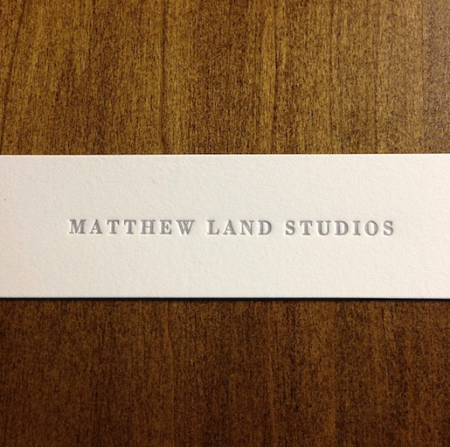Crispness of Deep Relief vs. Standard Plates
Hello,
I’ve recently picked up a C&P 8x12 OS. I’m pulling some beautiful impressions from it. It came with a deep relief Boxcar bass and I just realized all the old plates I’ve been using to test have been standard plates, not deep relief plates. I found this out by using my new roller gauge to set roller height only to have the rollers completely miss the plates (& pulling out the digital caliper and searching Boxcarpress’ site).
My question is, is there a noticeable difference in clarity/crispness between the standard and deep relief plates? Boxcar mentions that the standard plates print clearer/crisper. I’m hoping I won’t be disappointed in the loss of crispness/quality in switching to the deep relief plates.
If it’s obvious that the clarity drops in prints like the attached photo, I’m tempted to just keep ordering standard/harder plates and just set my rollers to the deep relief base/standard plate setup (something like .895 vs. type height).
Advice?

Screen Shot 2013-08-09 at 11.12.39 AM.png
I think if I were going to stick with the thinner profile plate, I’d just get some thin aluminum or mylar sheets sized to fit under your base to bring it up to proper height rather than lower the rollers and increase packing on the platen. But if you don’t print anything but polymer plates, you could change the roller height and platen packing to accomodate the thinner plate.
John Henry
I use a deep relief base and recently switched to regular relief plates due to a supplier. The supplier assured me that they use the regular relief plates with the deep relief base regularly.
I noticed a big difference, especially with small type. I spend more time taping, un taping my rails but nothing that I would declare a performance hindrance. I did nothing to change packing etc, just adjusted the roller height. But yes overall the type does seem more crisp.
I am using a Chandler and Price 10x15.
Boxcar says on their site that, yes, standard plates allow for a much more crisp image than the deep-relief plates (K152). The standard plates are a harder plastic, and allow for crisper lines and smaller details. I wouldn’t switch to deep relief if you like the clarity you’re getting because the K152 plates are definitely softer plastic. I don’t even like printing 8pt type with them.
Now that I feel comfortable leveling the platens of my Pilots, I’m thinking of switching to standard plates. It sounds like I don’t need to buy a new base, though, even though I own a deep relief base?
Taping the rails (or untaping them, I suppose) isn’t too much of a hassle, and if you’re not doing anything different with your packing, I’m pretty curious to try it out myself. Standard plates are also cheaper than deep relief plates, … now I’m all curious. Thanks for this post!
I also like the idea of just bringing my deep relief base up to type high instead of messing with rail tape.
Hello Nifty, I would definitely bring the base up with mylar or other hard material. I did that last night with a different base and didn’t have to adjust the rails. Printed beautifully.
Thanks for the input, everyone! It seems like adding a .023” shim below the base will be the solution if I’m going to print with standard plates. I like the idea of standard plates for clarity, but already having the deep relief base that came with the press, I might go ahead and print with KF152s.
I pulled out the samples Boxcar sent me this spring and the KF152 plate seemed to perform without noticeable clarity loss on the fine text (looked to be 8-9pt). I’m about to print a large job this month, so we’ll see how it goes with the KF152s. I may be trying to find the perfect .023 shim material this time next month.
Be sure to shim the base BEFORE lockup, as shimming after might not make it sit square with the bed of the press.
How would you go about attaching the mylar/thin metal to the deep relief base?
I first set the underlay (mylar, etc) I’m going to use under the base during lockup- I make sure it is just a bit wider than the base. Then I lock up on a flat surface per usual methods (for example, your printers stone etc. I do my lockup on the bed of a vandercook.) After the lockup, I lift the chase and then tape the underlay/mylar to the pieces of furniture around the base.
Depending upon how much you need to shim the base up in height, it may not have an effect whether you do this or not- but if you have to bring the base up .040”, for example, you’re making a situation where the chase may sit in the press at a tilt if things were set up in a specific way and the base was planed to the bottom of the chase.
Does this make sense to you?
If you find the perfect .023” shim material, do post here! I’d love to order some new plates that aren’t K152 to try out! :)
You can also get the samples from Boxcar here if you want to try out both plates!
http://www.boxcarpress.com/shop/letterpress-plate-samples/
Hello Nifty-
a 23 gauge aluminum sheet generally comes out to .02257”.
Is that close enough for you?
(I’m guessing most presses could be adjusted within a range of .0004”, if need be- compensating in the packing and inking systems for a half thousandth should not be a problem)
For reference: http://www.metal-stock.com/site/misc%20data/Gauge%20Chart%2024%20for%20w...
Oh! Thanks! I appreciate that. Now, to go find and buy one. Or two.
Welcome. Best thing to do is find a small online metals supplier, tell them the gauge/material you want. 6061 aluminum is a good durable alloy.